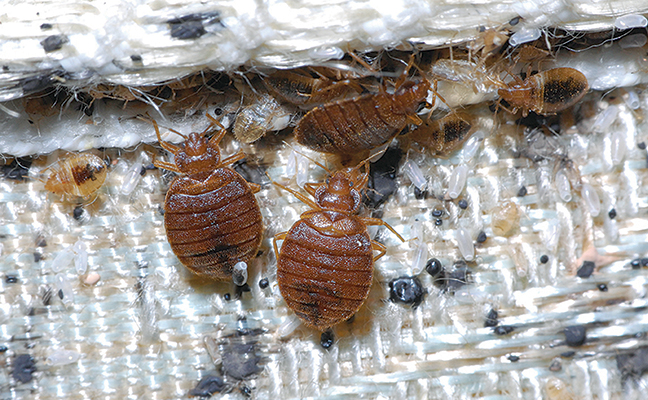-
Bug management becomes much easier when clients learn a few key points.
-
The time spent educating clients can drastically improve the results of the program.

Educate clients by showing them a live bed bug. Knowing what to look for may be key to early detection and avoiding an infestation.
Photo courtesy of, and copyrighted by, Gene White, pmimages@earthlink.net
Education and training at nursing home facilities, hospitals and other multi-resident housing accounts are an essential component of bed bug success. Among the groups we may need to educate are residents, management, housekeeping and other institutional staff. For each of these groups, there are techniques for getting your point across.
When presenting for tenants and housekeeping staff, you need to teach them how to identify bed bugs and their evidence. It’s good to explain what to look for, but it’s better to have actual bed bugs and examples of evidence to show them. When you come across discarded items with fecal spotting and spent eggs, take them along for “show and tell.” Cut off a piece of furniture that can be easily carried for training, but be sure that there are no live bugs or viable eggs in the pieces you take.
A vial of live bugs is a powerful teaching tool, but make sure it can’t be broken or you will introduce a whole new training technique not often appreciated by laymen.
More helpful hints
- Don’t be alarmed if the local conspiracy theorist accuses you of spreading the bugs yourself. Like all their other goofy ideas, no one believes them.
- If the audience is only seven or eight people, a single live bed bug in a plastic sandwich bag is a great way to get people up close and personal without crossing the line between education and consternation. People who need to look for bed bugs need to see real examples.
- Use a crib mattress to demonstrate where bugs are most likely to be found and how to look for them.
- Show clients how to use a vial or a zip-top bag to save specimens for identification.
- Many of the “bed bugs” that people find are not bed bugs at all. Consider bringing along examples of carpet beetle larvae to show them one of the more common misidentifications.
The proper response to finding a bug is not a treatment, but a confirmation of the identification. If it really is a bed bug, an inspection by a trained professional or a canine scent detection team is the next step.
When clients know what to look for, the chances for early detection go up dramatically. Make sure to include education in every program for long-term success.
You can reach Mark Sheperdigian, BCE, vice president of technical services, Rose Pest Solutions, Troy, Mich., at shep@rosepest.com.
Leave A Comment